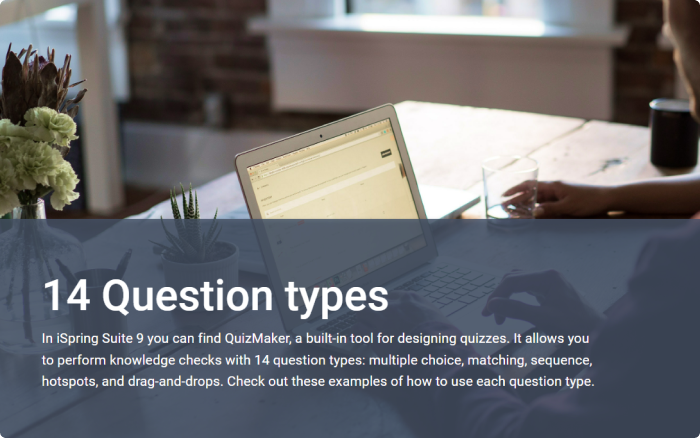7 Employee Engagement Strategies: Supercharge Your Staff

How engaged do you feel in your job? It’s a confronting question that can bring up mixed feelings in many people. Of course, not all employees feel passionate about their jobs, are committed to the company, and put discretionary effort into their work. Fortunately, there are some engagement drivers like workplace training which can keep your team motivated and productive. But before going into how to engage your employees with corporate training, let’s have a look at what the statistics say and whether engagement is really worth investing in.
Challenges in Current Employee Engagement
According to a Gallup employee engagement survey, engaged employees comprise only 32% of the total U.S. workforce. Just a few years ago, there was an upward tendency, and this engagement level reached its highest level of 36%. Ever since then, employee engagement has continued to decline. This may leave you thinking there’s a serious issue affecting not only the HR team but your business in general and, therefore, should somehow be resolved.
Also read: The 11 Best HR Tools for Streamlining Your Workflow in 2023
Disengagement creates numerous problems for a business, and the cascade effect of these problems downstream can be both powerful and expensive. In 2019, Gallup estimated disengagement costs US companies about a third of the disengaged worker’s salary. Actively disengaged employees cost the U.S. economy $483 billion to $605 billion each year in lost productivity.
So, how can you increase high employee engagement? In this article, we’ll explain how to engage your staff with corporate training, and outline seven employee engagement strategies. You’ll also find out how to make it even easier and to max out your training ROI with iSpring Learn LMS and the iSpring Suite authoring tool. But first, let’s see what employee engagement means.
What Is Employee Engagement?
Employee engagement is how devoted employees are to your company and their work. Imagine an employee who always comes to work late, complains about every single aspect of their job, and leaves earlier than others. This person is hardly engaged. And if an employee loves their job and connects with their team, they have a high level of engagement and intend to stay long-term.
Here’s how you can distinguish levels of engagement:
What Is an Employee Engagement Strategy?
An employee engagement strategy is a plan or approach designed to foster a positive and productive workplace environment where employees feel valued, motivated, and committed to their work and the organization. A successful employee engagement strategy always includes an employee engagement survey and results in improved performance, greater job satisfaction, and, therefore, lower employee turnover.
So, now let’s take a look at some insights into employee engagement strategies that might be helpful in your case.
Strategy 1. Onboard Your Employees from the Start
Employee onboarding is the initial process of assimilating new hires into an organization. Your employees should end the onboarding having acquired the necessary knowledge, skills, and behaviors to become effective and long-term team members.
But let’s get down to the nitty-gritty: what should be a part of your onboarding program? Some common components include:
- Preparations before the first day
- Company’s core values and mission
- Workplace culture
- Introduction to business and software tools
- IT and security policies
- Office or worksite orientation
- Meeting the team members
A good onboarding program creates, fosters, and maintains high employee engagement rather than simply providing a ‘getting started’ checklist. Some components of your onboarding program can be delivered as engaging eLearning modules, for instance, an interactive office space orientation, an introduction to software tools and company culture, or an interactive pre-work module to get your new starters in ‘learning mode’ before their first day at the office and form a positive emotional connection with a new place.
These and more are easily possible with the iSpring Learn LMS and iSpring Suite bundle — a complete learning solution that will help put new hire onboarding on autopilot. You can create courses, assign them to employees, and keep track of their results.
Case study
A good example of applying this employee engagement strategy is Oticon, a global hearing aid manufacturer.
With more than 250 employees across the country, including field-based professionals such as account managers and field trainers who travel extensively, it was crucial to develop a consistent onboarding process that could be taken offsite. When new account managers join Oticon, Inc., they go through a 10-week onboarding program to help them acclimate to the company and become productive quickly.
They used iSpring Suite to create an onboarding course that imparts knowledge about the company, products, and technology.
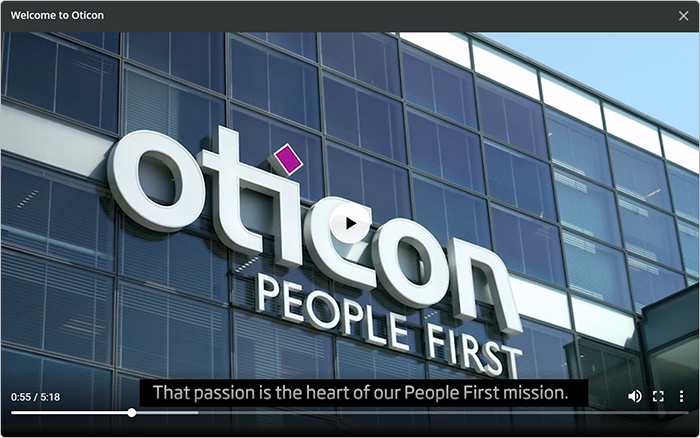
A slide from Oticon’s onboarding course
To deliver this training to all new hires, they use iSpring Learn LMS.
Strategy 2. Provide Engaging Interactive Learning Content
This should be a no brainer, but so many companies still get this part wrong when designing their learning programs by nailing the ‘interactive’ part but forgetting all about the ‘engaging’ part! What do we mean by this? When you engage with training it’s generally because the subject matter and content are presented in a way that resonates with you — in other words, it’s relevant.
According to a 2016 Emerging Workforce Study, as many as 45% of employees said their current internal training offerings are not relevant to their daily responsibilities.
To improve employee engagement and help your teams meet their career development needs, organizations must provide relevant interactive training to their learners. One great way to do this is to include video content and role-plays that focus on specific aspects of an employee’s role.
iSpring Suite can help you get this type of content developed quickly and with no hassles. Need some inspiration? Take a look at this dialog simulation built with iSpring:
Case studies
Knox Community Hospital created engaging training for over 1,200 employees with iSpring. Before iSpring, training at Knox was very generic. They provided learning materials in PowerPoint or PDF format and put a test at the end. Employees would simply click through static slides and take the test again and again until they passed.
They saw that learners weren’t getting the information and knowledge they needed. In addition, employees were complaining that all the training was always the same. With iSpring they were able to create interactive and engaging SCORM courses. For example, they employed role-plays that reflected real-life situations and resulted in their employees developing real, actionable skills.
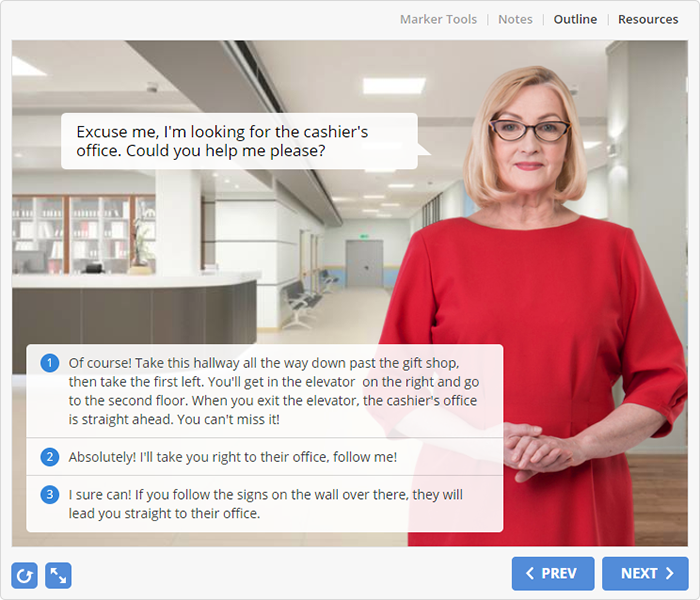
A role-play example from the Customer service course
Another good example of using this employee engagement strategy is Villa St. Vincent, a senior living community that provides holistic senior care and services. Villa St Vincent discovered iSpring for different reasons — their initial eLearning deployment was fraught with hardships. They finally succeeded with iSpring and increased 90-day employee retention by 24% in the first four months.
Villa St Vincent use video in their interactive repertoire. They use iSpring Suite to create video demonstrations to describe various skills, such as how to measure and record a person’s pulse.

iSpring makes polishing and editing videos easy
Strategy 3. Add Assessments That Are Not Boring
Employee attestation is an important part of the training lifecycle. From an employer perspective, you need to know that competencies have been met and employees are capable of performing their duties effectively. However, from an employee perspective, attestation is a challenge that can be quite stressful and exhausting. Is there a way to turn a draining task into an engaging experience?
The solution is right in front of your eyes: interactive online quizzes. With quizzing and interactive knowledge check activities, you can engage employees both during the training itself and throughout their longer workplace development journey.
iSpring Suite makes the quiz building process very easy. With 14 in-built question types ranging from multiple choice to drag-and-drop matching quizzes, sequencing and hotspots, it’s easy to create interactive and engaging knowledge checks for your learners. Take a look at this example to see what types of quizzing can be created in iSpring Quizmaker.
Case study
Let’s take Knox Community Hospital’s case again. To make courses even more effective, they add interactions and quizzes every couple of slides. They also put a small evaluation at the end of each course.
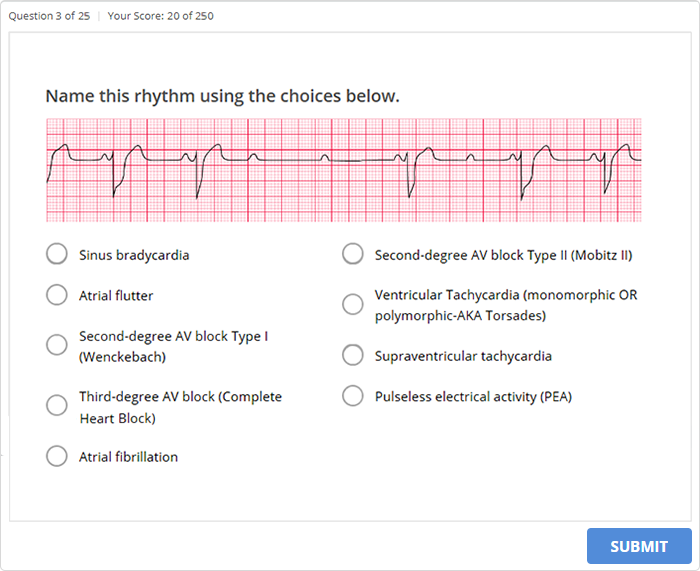
Example of question from a course for nurses on cardiac rhythms and EKGs
By strategically using quizzing, Knox Community Hospital engages their learners, aids retention, and provides a premium learning experience.
Strategy 4. Use Mobile Learning
With huge global levels of smartphone saturation, many HR departments and employers are improving employee engagement via mobile learning. This approach can be in the form of dedicated microlearning, or a cohesive way to include mobile in a learning strategy via a blended approach.
Using the newest capabilities of the smartphone platform like a customized learning delivery app and real-time content sharing, you are able to create a new, more engaging learning experience. There are many benefits to taking a mobile approach to learning, including consistency of training, making use of employee downtime, highly accessible content, work-life balance, flexibility, and faster consumption/training times.
With the iSpring Learn mobile app, users can view courses online, save content on mobile devices, and study it at their convenience. The results are tracked offline and sent to the LMS when the connection is restored. With support for gamification and certificates, your learners will be truly engaged by the mobile experience, but we’ll discuss gamification and certificates a little bit later.
Strategy 5. Reward Your Employees
Everyone loves to be rewarded for their efforts, and your learners are no different! Think back to the last time you did some training or took an online course. Did you get a certificate at the end? If you did you will probably remember, and may even still have the certificate. Why? It shows the time and hard work you put into your achievement. That’s how you develop a positive emotional connection with your learners.
It makes sense to recognize your employees’ talents with a certificate when they complete a training program, and with iSpring Learn LMS, you can do this automatically.
Case study
Learning Nurse, an informal learning platform for nursing students, practicing nurses, and nursing educators, does not train its employees directly but provides training services for healthcare professionals. Still, you can draw on their experience and adjust it to your business.
With iSpring Suite, Learning Nurse has created and published over 250 courses and quizzes on medical terminology, anatomy, diseases, and much more. When learners complete a course, they get a certificate.
The educators at Learning Nurse provide certificates using iSpring Suite’s ability to send a set of quiz variables to a server. They developed a custom certificate program that generates completion certificates based on the data received from iSpring Suite.
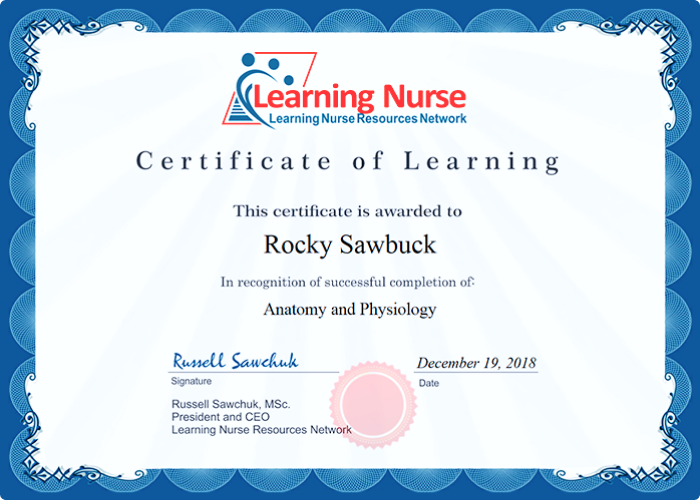
Certificate of course completion
Strategy 6. Involve Your Employees in Healthy Competition
A little healthy competition is never a bad thing. There are few things more engaging than trying to beat your colleague and be the first to win a prize. Implementing game mechanics is an effective employee motivation and engagement strategy. It’s the carrot rather than the stick, and fortunately, it’s getting easier for you to make the carrot of gamification sweeter than ever.
Some common gamification methods include:
Points
Learners can earn points and compete with colleagues. You can award points when they view courses and successfully complete tests, simulations, and assignments. Fixed points can be awarded for different actions; for example, 10 points could be awarded for each viewed course and 50 points for each test they complete. iSpring Learn LMS makes setting up and using points simple.
Leaderboards
Leaderboards motivate your learners to track their progress and achieve better results. You can check a user’s position on an organization or group leaderboard, and segment learners depending on their achievements. Leaderboards are also a great way for users to check their own progress over time.
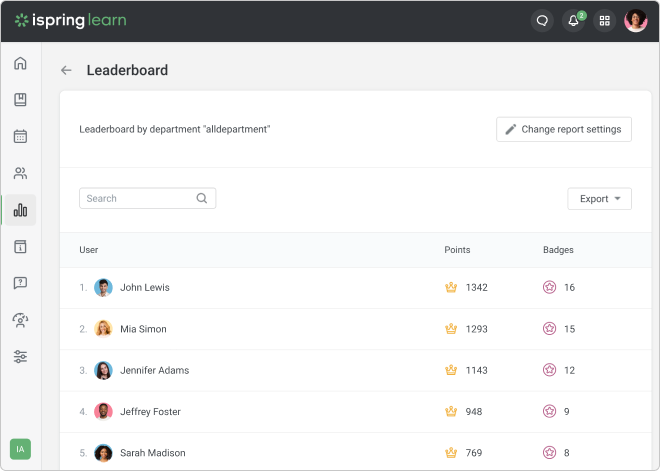
A leaderboard in iSpring Learn LMS
Badges
Badges are a nice way to reward learners for completed materials and accumulated points. Points can act as a point of reference for progress with a badge as the eventual reward. For example, you can award them with a new badge for every 50 points. Or link the badges to specific achievements, for example, award a “Designated Closer” title as soon as they complete a course on sales techniques.
iSpring Learn makes working with badges simple and has a large built-in collection of badges, plus you can design your own custom badges with images.
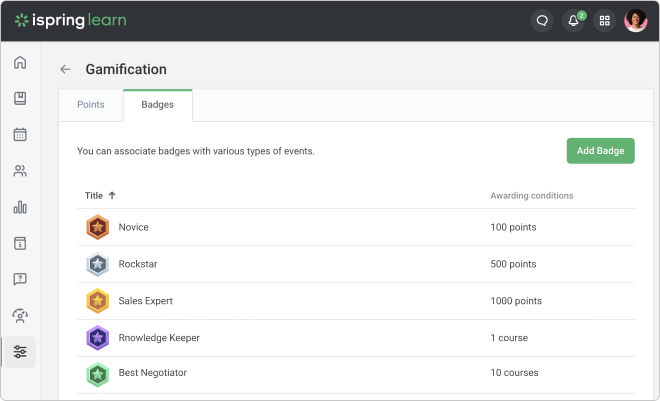
Badges in iSpring Learn LMS
Strategy 7. Give Employees a Voice
So your employees have completed the training program that you assigned them, passed the assessment and perhaps been awarded a certificate, but what next? Evaluation is an important part of the training process. It provides you with insights into what worked, what didn’t, and what can be improved next time, and just as importantly, it gives your employees a feedback platform, making them feel more engaged and valued, and developing a two-way communication.
While employee feedback is traditionally located at the end of a training module, there’s nothing to stop you from adding evaluations and engagement surveys at any point in a course that seems appropriate, for instance at the end of a particularly important topic, to capture how well the trainee thought the content was explained while it’s still fresh in their mind. You can also use pulse surveys to assess the level of job satisfaction, loyalty, diversity, inclusion, appreciation, and the likelihood of a rise of an employee turnover rate.
iSpring Learn offers a simple way to set up and use surveys.
Case study
Central One Federal Credit Union, a not-for-profit credit union, launched a consistent online training system with iSpring. Surveys and evaluations were a key component to monitor the quality of training.
In their case, the format of the evaluation was dependent on the type of course; for example, onboarding required a one-month check-in with new employees to find out if the training was helpful or not. For new training initiatives, they used surveys at the end of different chapters on the learning paths to make sure the right message was getting across to the employees.
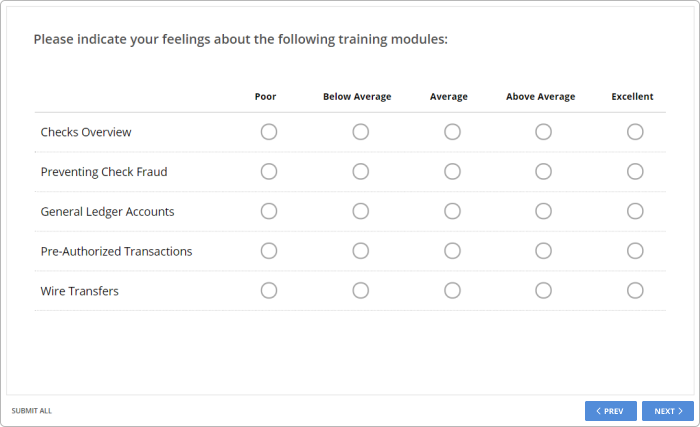
Using surveys to learn employee feedback and monitor the quality of training
To Sum Up
We hope this article provided you with some fresh ideas and effective engagement strategies on how to develop more engaged employees. To implement these employee engagement action plans in your eLearning programs, download an iSpring Suite demo and sign up for a free iSpring Learn LMS trial and get started right now.

